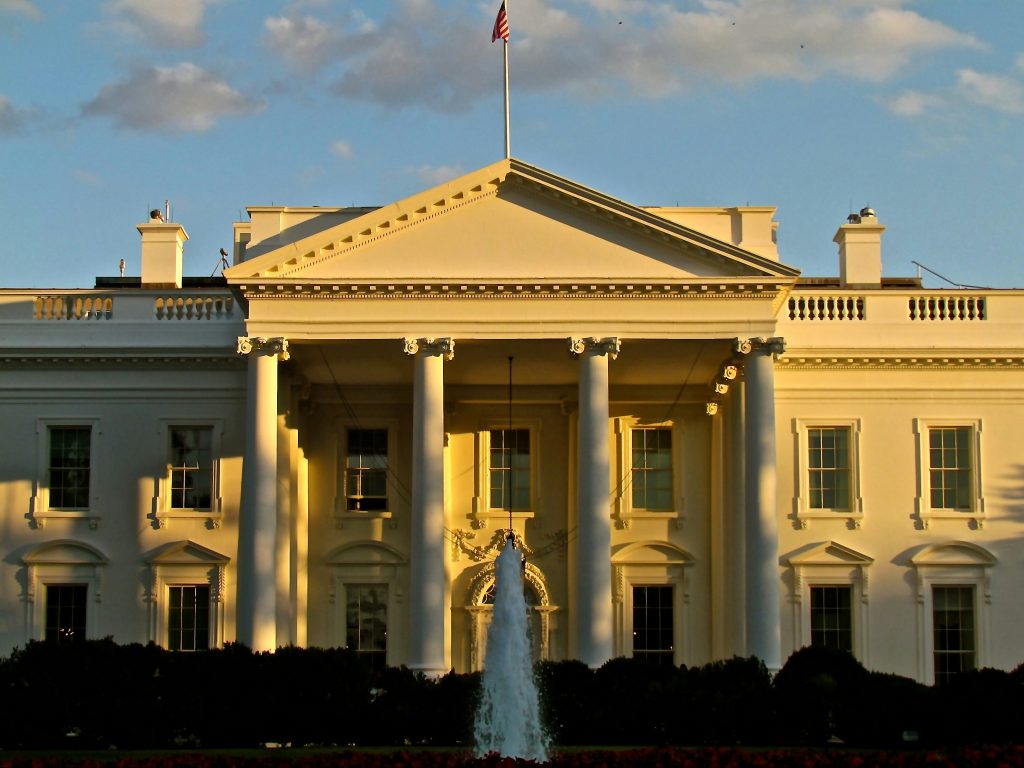Will the Sackler Family Escape Liability for the Opioid Epidemic? And Why Two Major Charities Want Them To

By: Robert Bartlemay*
Between 1999 and 2021, nearly 247,000 people have died from overdosing on prescription opioids.[1] The CDC places the start of the first wave of the opioid epidemic in the 1990s, when prescription opioids became widely available.[2] One of the most widely prescribed and aggressively marketed opioids introduced at that time was OxyContin, manufactured by Purdue Pharma.[3] When the FDA approved OxyContin, they permitted Purdue to label it “low risk of addiction.”[4] Unfortunately, that would prove untrue. Starting in 2000, state governments began to raise alarms about the abuse of OxyContin.[5] In 2001, the FDA made Purdue remove “low risk of addiction” from the OxyContin label.[6] Lawsuits flooded in.[7] Purdue and its former owners, the Sackler family, face claims valued over $40 trillion dollars for their role in kickstarting the opioid epidemic.[8] Faced with massive liabilities, on September 15, 2019, Purdue and its related entities declared bankruptcy.[9]
On September 17, 2021, the Bankruptcy Court for the Southern District of New York approved a reorganization plan for Purdue which included a third party release that would shield the Sackler family “conclusively, absolutely, unconditionally, irrevocably, fully, finally, forever and permanently” from any liability related to OxyContin.[10] In exchange for this release, the Sackler family agreed to pay $4.325 billion dollars, later increased to $5.5-6 billion dollars, to help Purdue pay its creditors.[11] This was a pretty sweet deal for the Sackler family.[12] Especially because the Sacklers had spent years prior to the bankruptcy siphoning away approximately $11 billion dollars of Purdue’s revenue to their family trusts and holding companies, which would now be protected by the third party release.[13] While creditors of Purdue overwhelmingly supported the reorganization plan, including the third party release[14], the U.S. Trustee and several other groups stepped up to oppose the third party release.[15]
After the Bankruptcy Court approved the reorganization plan, an appeal was brought to the district court.[16] The district court vacated the order confirming the reorganization plan.[17] On appeal to the Court of Appeals for the Second Circuit, the district court was reversed and the plan was reinstated.[18] The Supreme Court has agreed to hear the case and decide “[w]hether the Bankruptcy Code authorizes a court to approve, as part of a plan of reorganization under Chapter 11 of the Bankruptcy Code, a release that extinguishes claims held by nondebtors against nondebtor third parties, without the claimants’ consent.”[19] The Court will hear argument on December 4, 2023.[20]
The petitioner in the case, U.S. Trustee William K. Harrington, argues that the shareholder release is not authorized by the Bankruptcy Code.[21] The purpose of the Bankruptcy Code is to “modify relations between debtors and their creditors.”[22] The Code is not designed, petitioner argues, to eliminate liability for someone besides the debtor in bankruptcy.[23] Permitting third party releases, petitioner says, would stretch the narrow wording of the Code too far beyond its purpose.[24] Additionally, petitioner notes the third party release in this case is so broad that it is “the functional equivalent of a discharge to a nondebtor” and protects the Sackler family from liability for “fraud and other forms of willful misconduct” which cannot be discharged through bankruptcy.[25]
The respondent in this case, Purdue, argue a third party release for the Sackler family is permissible under the bankruptcy code.[26] Respondent argues that the goal of the bankruptcy law is to equitably distribute a debtor’s assets to the creditors, and that the Bankruptcy Code gives courts broad authority and flexibility to effectuate this end.[27] Respondent asserts that third party releases are necessary when they help protect assets to pay creditors.[28] Respondent argues the Bankruptcy Code is broad enough to encompass third party releases along these grounds.[29] Respondent also states this release is necessary to ensure the victims of the opioid epidemic are able to get the compensation they deserve.[30]
The Sackler family is joined by two unlikely allies in their quest to escape liability for the opioid epidemic: the Boy Scouts and the Catholic Church. The Boy Scouts of America and the U.S. Conference of Catholic Bishops both filed amicus briefs supporting a third party release for the Sackler family.[31] Both organizations have suffered devastating sexual abuse scandals.[32] As a result, the Boy Scouts and dozens of catholic dioceses have undergone bankruptcies.[33] These bankruptcies often include third party releases.[34] For the Boy Scouts, these third party releases have been used to protect thousands of partner community organizations and local affiliates from liability for claims that happened decades in the past.[35] Similarly, Catholic dioceses have been able to release individual Catholic schools and parishes from liability.[36] In both of these situations, third party releases have eased the financial burden on smaller third party charitable organizations, while also providing greater compensation for creditor victims.[37] In both of these cases, third party releases were used to help victims get more compensation more easily than would have otherwise likely been possible. While it may be easy to disdain the potential release of the Sackler family from liability for the opioid epidemic, it is important to consider the other organizations that can benefit from having access to third party releases in bankruptcy. While they may not be appropriate in every case, there is strong evidence of their usefulness.
* J.D. Candidate, Class of 2025, Sandra Day O’Connor College of Law at Arizona State University.
[1] Brief for the Petitioner at 3, Harrington v. Purdue Pharma L.P., et. al., No. 23-124 (S. Ct. Sept. 20, 2023).
[2] Understanding the Epidemic, Centers for Disease Control and Prevention (Nov. 8, 2023 3:43 AM), https://www.cdc.gov/opioids/basics/epidemic.html.
[3] In Re Purdue Pharma L.P., 69 F.4th 45, 58 (2d Cir. 2023), cert. granted sub nom. Harrington v. Purdue Pharma L.P., No. (23A87), 2023 WL 5116031 (U.S. Aug. 10, 2023).
[4] In Re Purdue Pharma L.P., 69 F.4th at 58.
[5] Id.
[6] Id.
[7] Id.
[8] Id. at 82.
[9] Id. at 60.
[10] Id. at 60-62.
[11] Id. at 81.
[12] See generally Libby Lewis, The Purdue Case: Can the Rich Use Bankruptcy Law as Cover?, The New Republic (Nov. 8, 2023 3:47 AM) https://newrepublic.com/article/175791/purdue-pharma-bankruptcy-law-cover.
[13] In Re Purdue Pharma L.P., 69 F.4th at 59.
[14] Id. at 82.
[15] Id. at 68.
[16] Brief for the Petitioner, supra note 1, at 7.
[17] Id.
[18] Id. at 8.
[19] Id. at I.
[20] Amy Howe, Purdue Pharma, Tax Cases Headline December Argument Session, SCOTUSblog (Nov. 8, 2023 3:50 AM) https://www.scotusblog.com/2023/10/purdue-pharma-tax-cases-headline-december-argument-session/.
[21] Brief for the Petitioner, supra note 1, at 11.
[22] Id.
[23] Id.
[24] Id. at 12.
[25] Id.
[26] Brief for Debtor Respondents at 14, Harrington v. Purdue Pharma L.P., et. al., No. 23-124 (S. Ct. Oct. 20, 2023).
[27] Id.
[28] Id. at 15-16.
[29] Id.
[30] Id. at 3.
[31] Brief for Boy Scouts of America as Amicus Curiae Supporting Respondents, Harrington v. Purdue Pharma L.P., et. al., No. 23-124 (S. Ct. Oct. 27, 2023) [hereinafter Brief for Boy Scouts]; Brief for U.S. Conference of Catholic Bishops as Amicus Curiae Supporting Respondents, Harrington v. Purdue Pharma L.P., et. al., No. 23-124 (S. Ct. Oct. 27, 2023) [hereinafter Brief for Bishops].
[32] Brief for Boy Scouts, supra note 31, at 3; Brief for Bishops, supra note 31, at 2.
[33] Brief for Boy Scouts, supra note 31, at 2-3; Brief for Bishops, supra note 31, at 2-3.
[34] Brief for Boy Scouts, supra note 31, at 4-5; Brief for Bishops, supra note 31, at 2-3.
[35] Brief for Boy Scouts, supra note 31, at 3-4.
[36] Brief for Bishops, supra note 31, at 3-4.
[37] Brief for Boy Scouts, supra note 31, at 3-4; Brief for Bishops, supra note 31, at 3-4.


